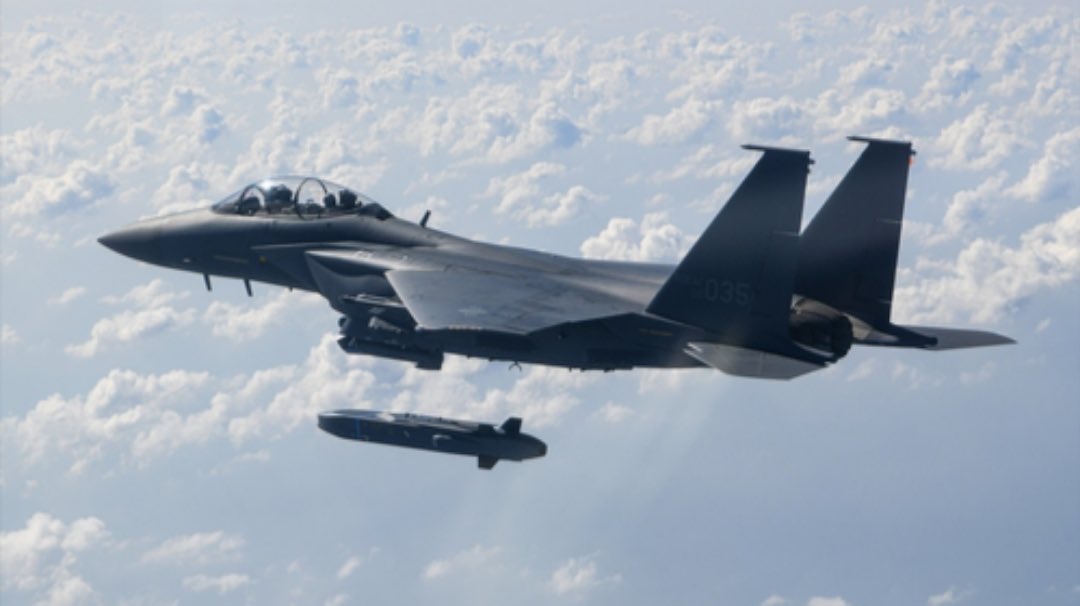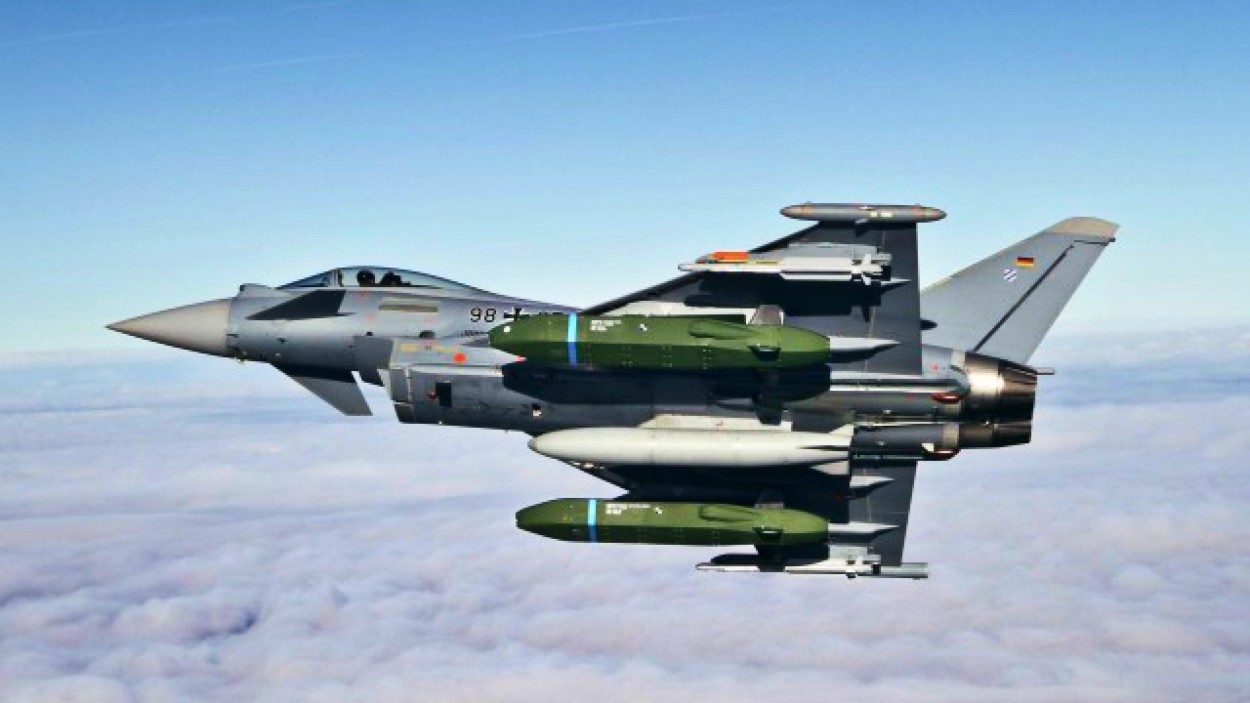As Ukraine begs for Taurus missiles to counter the Russian military, the South Korean Air Force fired the German-origin Taurus missile in a live fire drill. The development corresponds with increased tensions in the Korean Peninsula that have triggered concerns of a potential escalation.
The Republic of Korea Air Force (RoKAF) announced on October 11 that it carried out live-fire drills involving the Taurus missile over the Yellow Sea on October 8 and October 10.
The F-15K fighter jet fired the cruise missile, which traveled over 400 kilometers before hitting the pre-designated target in the Yellow Sea. Video footage of the drill has been published, showing an extensive sequence of events, from the missile’s integration into the aircraft to its eventual firing.
According to the Air Force, in addition to conducting live fire drills, it also practiced using F-15K and F-35A Lightning II aircraft to counter threats from hostile cruise missiles. The number of fighter jets and missiles employed by the drills was not specified.
Taurus missiles successfully identified enemy cruise missiles traveling at high speed and low altitude. At the same time, E-737 airborne early warning and control aircraft tracked their flight route to relay information to other aircraft in the air, as well as the Master Control and Reporting Center. The RoKAF announced that the tests were a success.
The latest drills come at a time of increased hostilities between the two Koreas. North Korea has been incessantly launching trash balloons into South Korea despite repeated warnings from Seoul that it would lead to “stern action.”
Ratcheting up tensions, the North Korean military announced earlier this week that it will “completely cut off roads and railways” linked to South Korea and “fortify the relevant areas of our side with strong defense structures”. The decision, they said, was to cope with “confrontational hysteria” by South Korean and US forces. Pyongyang has accused South Korea of colluding with the US to destabilize the region.
The last time the South Korean Air Force conducted a live-fire test using the Taurus missile was in 2017. It was a show of force and in reaction to North Korea’s sixth nuclear test.
Taurus is a long-range missile that, if launched from near Seoul, can strike key locations in North Korea within 15 minutes owing to its top speed of 1,163 kilometers per hour. A contract for the missile was signed in 2013, and deliveries started in 2016. South Korea further signed a contract to purchase 90 more Taurus long-range, air-launched, bunker-busting missiles in 2018.

These KEPD-350K Taurus missiles have been integrated with South Korea’s customized F-15K Slam Eagle fighters, a strategic move tightly connected to Seoul’s ‘kill chain’ defense strategy.
This strategy is explicitly designed to swiftly eliminate North Korean command-and-control centers and fortified positions that house nuclear and conventional missile forces, all in the event of a potential conflict.
Additionally, South Korean defense company LIG Nex1 and Germany’s Taurus Systems signed a MoU at Seoul ADEX 2023 to jointly develop an adapted version of the KEPD-350K Taurus missile for the Korea Aerospace Industries (KAI) FA-50.
Notably, Taurus has garnered significant attention in recent times due to Ukraine’s persistent appeal to Germany to transfer lethal long-range missiles.
Ukraine Not Getting Taurus Missiles Anytime Soon
Ukraine has long pleaded with its Western allies for long-range weapons. While the UK and France provided their Storm Shadow/SCALP-EG long-range air-launched missiles to Kyiv last year, German Chancellor Olaf Scholz has declined to provide Taurus missiles.
KEPD-360, or Taurus, is an air-to-surface missile jointly developed by Germany and Sweden. It is equipped with stealth technology, making it less prone to detection. It is powered by a turbofan engine and has an official range of up to 500 kilometers. The missile is also equipped with electronic and self-defense countermeasures.
On September 13, Scholz reaffirmed his stance against providing Ukraine with the Taurus long-range missiles, saying, “Germany has made a clear decision about what we will do and what we will not do. This decision will not change.”
Reacting to the statement, Ukrainian President Volodymyr Zelenskky said that Germany’s reluctance to make the transfer of Taurus missiles was connected to Russian President Vladimir Putin’s nuclear saber-rattling. “As I understand it, the Chancellor says that Germany is not a nuclear state and that this (Taurus missiles) is the most powerful weapon system in Germany,” the President said in an interview with Bild.
In March this year, German Chancellor Olaf Scholz contended that Taurus missiles could not be deployed without German soldiers and that Germany was not ready to risk escalation by sending its troops to Ukraine. He made the statement after the German Bundestag (Parliament) rejected the opposition’s proposal to send long-range precision missiles to Ukraine.
“From my point of view, this is a very long-range weapon,” Chancellor Scholz told Parliament’s lower house. “Given the significance of not losing control over targets, this weapon could not be used without the deployment of German soldiers. I reject that.”

The high-precision stand-off guided missile can penetrate air defenses and destroy hardened military targets and deeply entrenched underground targets.
Taurus missiles are designed for precision strikes on heavily fortified and underground targets while keeping the aircraft safe from enemy air defenses. With their accuracy and standoff range, these missiles provide optimal protection for both the crew and the aircraft.
This is why Ukraine continues to urge the Olaf Scholz administration to approve the transfer of Taurus missiles.
Similarly, South Korea’s recent live firing of the missile could be interpreted as a display of strength on the Korean Peninsula, aiming to deter an aggressive North Korea that has ramped up missile and nuclear threats.
- Contact the author at sakshi.tiwari9555 (at) gmail.com
- Follow EurAsian Times on Google News




